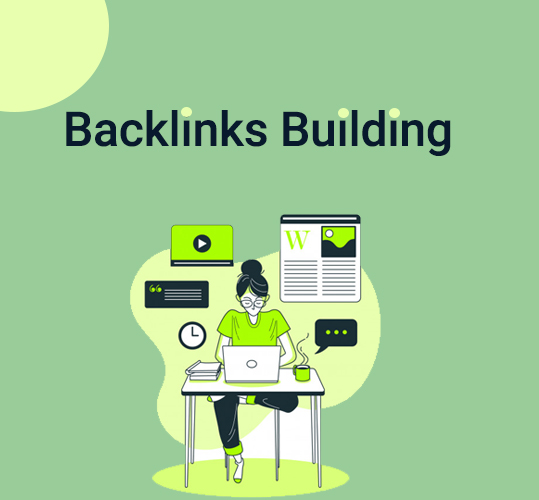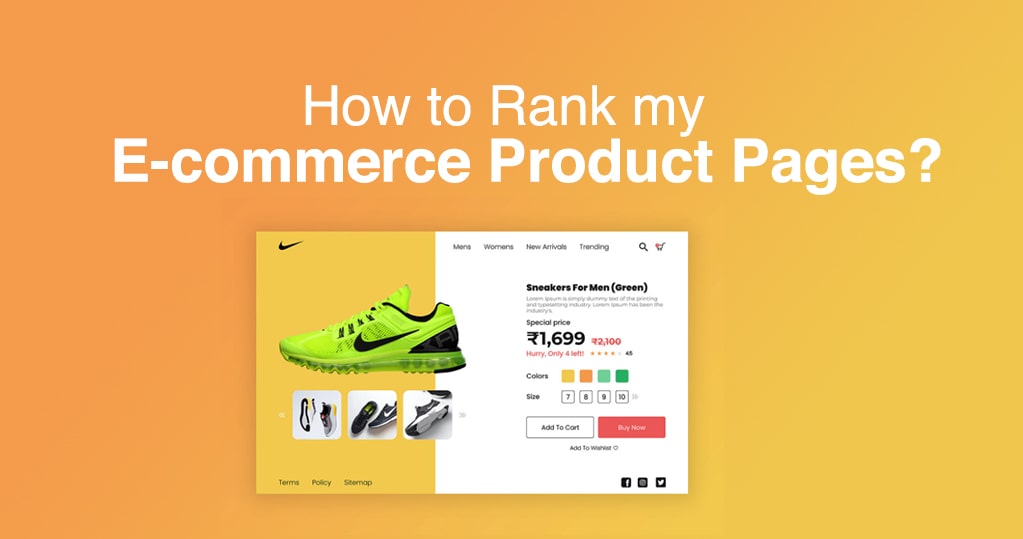E-commerce product pages can rank in search engines by applying on-page SEO (Search Engine Optimization) and off-page SEO. Search engine optimization is a process of making web pages search engine friendly by applying the various guidelines provided for webmasters. Professionals perform activities on the pages which have to be ranked (on-page activities) and also beyond the website (off-page activities. The product page referred is the product detail page of the catalog. There are only a few major search engines across the globe, Google, Yahoo, and Bing. There are three types of search engine listings,
- Organic listings
- Local listings
- Paid listings
The competition to list in top positions with desired search terms is in all the three types of search engine listings. Let us discuss here the ways to rank in the top position of the organic search result pages which has a broader reach across the globe. E-commerce SEO involves following on-page and off-page activities.
- Setting up Webmaster’s Tools– Configuring Google search console for the e-commerce website should be the first step. At the time of applying e-commerce SEO, it may not be or even may be configured. It can be done in the following ways, log into webmasters tools >> add property (the website) >> Verify the property. Verification of the ownership of the website is done by either adding a meta tag in the head section of web pages or uploading an HTML page to the www folder of the server.
- Keywords Analysis– Selection of keywords or search terms as per the business goals is an important second step. The next steps are dependent on this step. Usually, the product name in various ways is the search terms. Sometimes category name also involves in the searches. The list of such search terms should be longer together with as per the past trend what key phrases are getting searched. Google Adwords keyword planner together with other external online tools is helpful in it.

- File or Directory Nomenclature– File names of product pages, directories, and image files should be optimized. Said that, if the product details page is for nine red roses then the product page file name should be something like, /fresh-flowers/9-red-roses.html. Where fresh flowers can be category name or so and brought here as per the keyword analysis. Similarly, the product image should have a name like 9-red-roses-fresh-flowers.jpg with an ALT attribute, fresh flowers – 9 red roses.
- Title & Meta Description Optimization – The product page title and description of the web pages mentioned in the meta tag should be optimized as per the targeted keywords. Keep these user-friendly, the visitors of the page should get a page that is mentioned in the title section of the page and meta description section of the page. Include the keyphrases targeted for the page in the page title and meta description for optimum results.
- Content Optimization– Text and image content should be optimized as per the search engine’s guidelines provided. The number of words in the content, number of keywords, synonyms of keywords, placement of keywords are some of the things which must be optimized to appear in top SERPs. Write a detailed description of the product on the page by keeping users in mind who might read it. Include the targeted search terms in whole, in parts, synonyms, singular, plural, and likewise.
- HTML Code Optimization– HTML code should be error-free. Most of people are using e-commerce CMS for their store website in these days. These CMS can have some drawbacks regarding the code quality, which must be checked. Usually, some unnecessary files of CSS and Javascript are called on the page by default. Some of them lead to 404 Not Found error pages. Such or any other code level discrepancies should be fixed. Search engines do not like errors.
- Backlinks Building – Search engines rely on how many web properties are voting for a website or webpage for specific keywords. That is, how many websites are telling that the linked site is important for this keyword or key-phrase. Strategic backlinking is required to score in the search engines. E-commerce SEO professionals understand how many backlinks are required for a keyword to rank by competitors’ analysis.

Achieve a variety of strategic backlinks by following or more activities:- Blog Submissions
- Article Submissions
- Directory Submissions
- Social Bookmarking
- Profile Creations
- Classified Submissions
- Forum Submissions
- Q&A Submissions
- Infographics Submissions
- Image Submissions
- Video Submissions
- Off-page Optimization– SEO activities beyond the website should be optimized. Backlinks building falls under off-page activity. While getting a backlink, the linking text should contain the targeted key phrase. This makes search engines understood, the linked page is important for this key phrase. This helps to win the trust of a search engine for specific key terms and becomes easier to rank the product pages.
- Link Popularity– As popular the website link over the World Wide Web that many benefits it gains in SERPs. A webmaster might not win backlinks all the time. Some websites might allow posting the link URL without providing any backlink. This also gets counted in the search engine ranking algorithm. Spread the product page link over the Internet with maximum possible efforts.
E-commerce SEO is a continuous process to achieve good rankings with targeted keywords or key phrases. Both on-page and off-page activities should be carried out on regular basis. Keywords selection and competitor analysis are vital factors besides the activities to rank well.
It is recommended to increase the number of content-rich pages under a few sections of the website to cover more keyword segments. If possible, include an e-commerce blog for richer content. Currently, there might be product & category pages covering the keywords or key phrases.
Usually, it takes a longer time to rank in the top 10 of SERPs with keywords. At first, on-page SEO is applied and then off-page SEO. After analyzing competitors, professionals do all the off-page SEO activities that it takes to rank in the top 10 of SERPs. It is hard to restrict frequent activities as far as the goal is concerned.
The e-commerce product pages can be optimized easily by using Builderfly CMS. The e-commerce platform offers all the possible SEO features to rank your pages on top of the SERPs and sell your maximum number of products online through the search engines.








